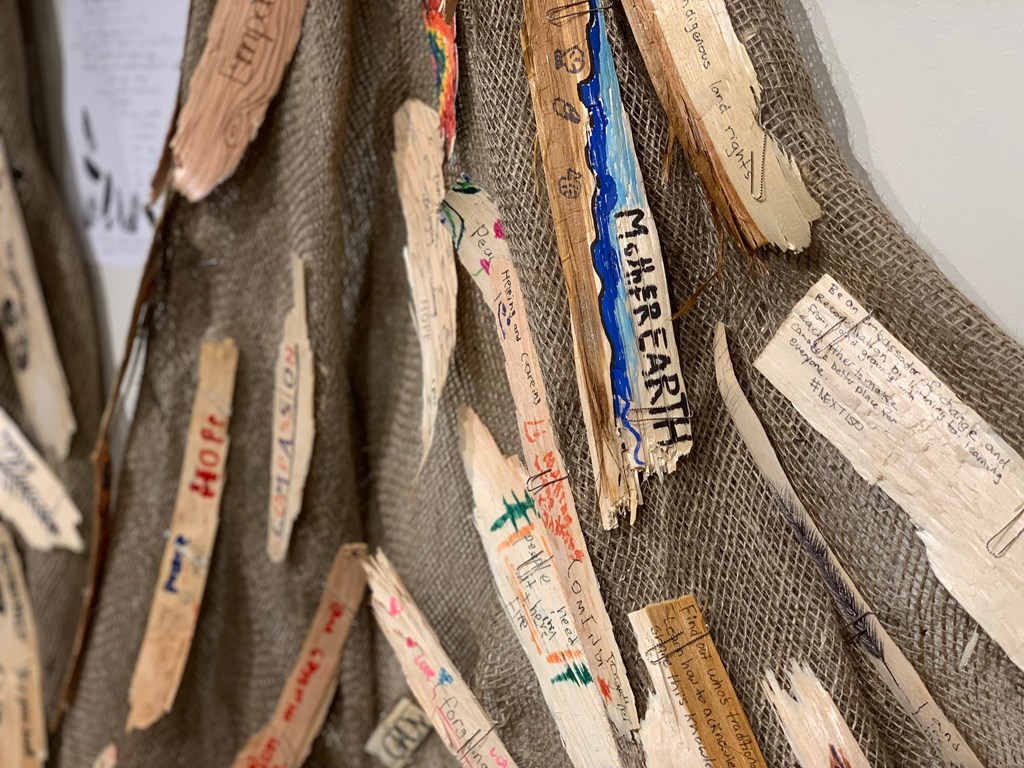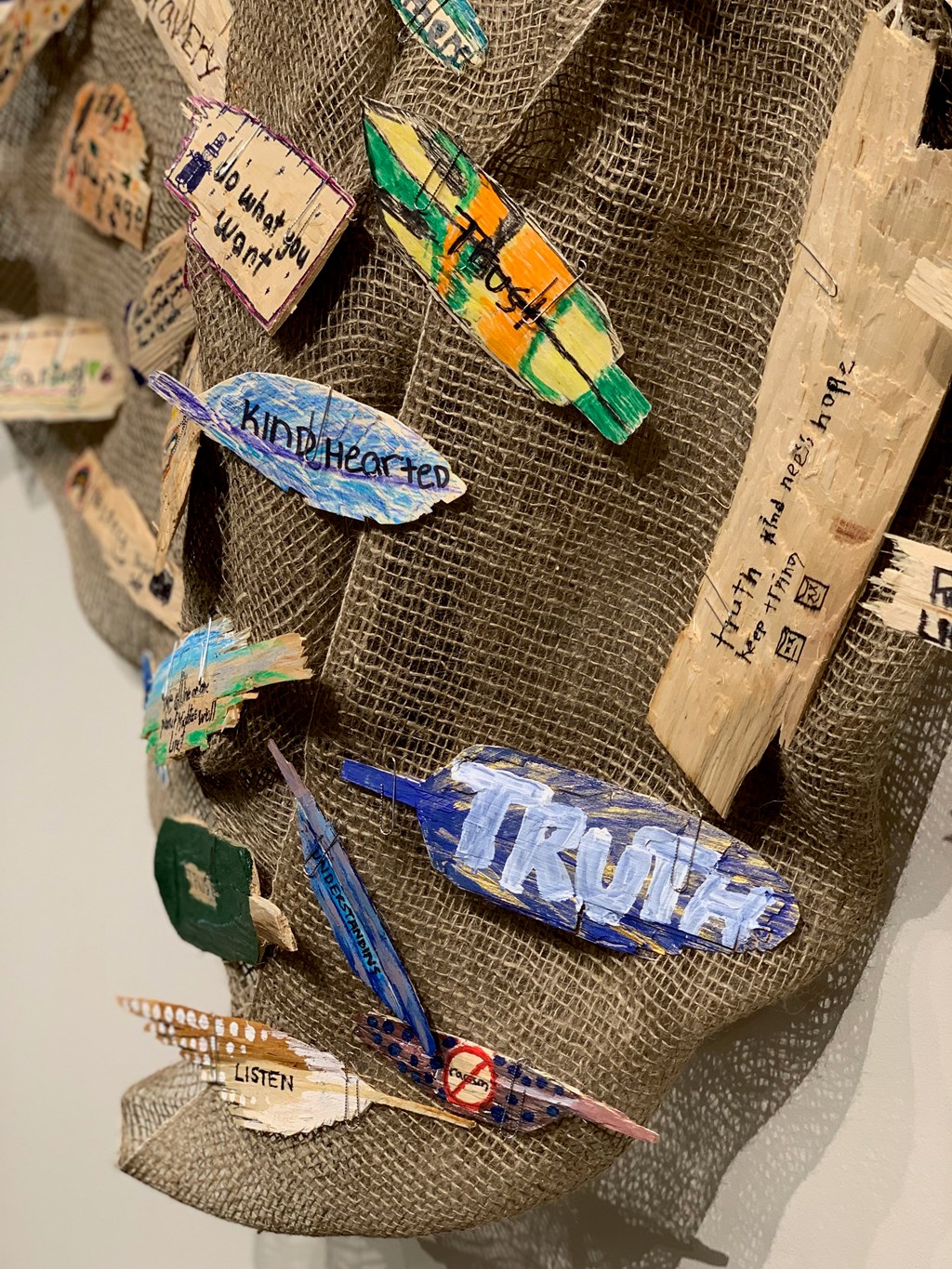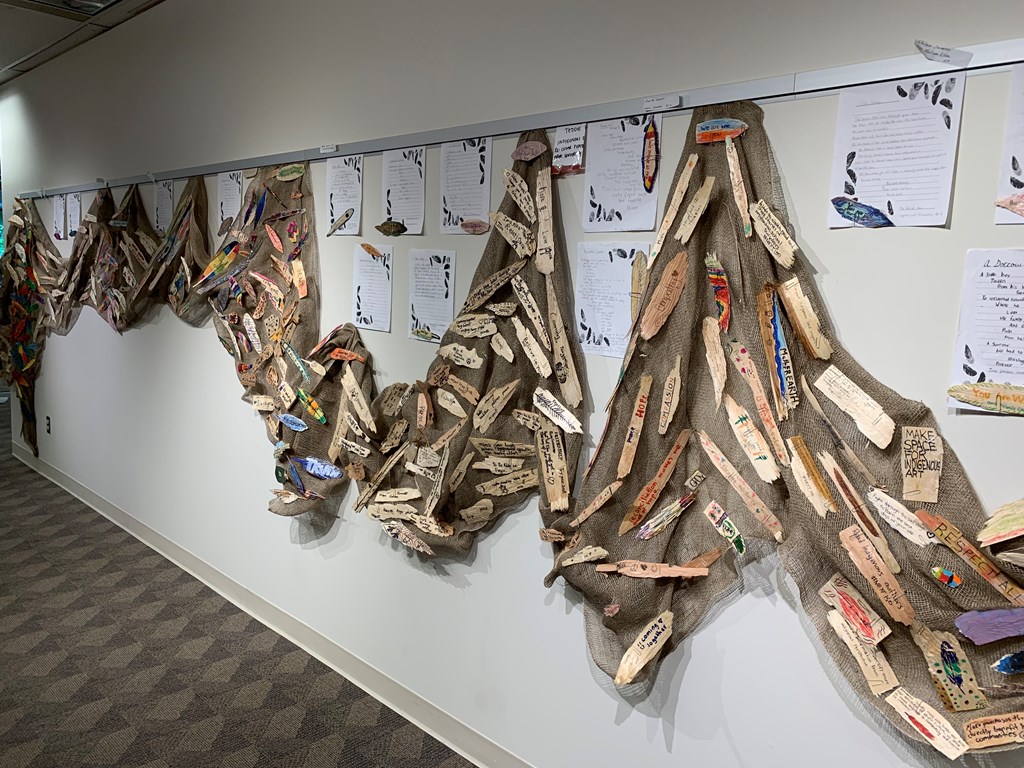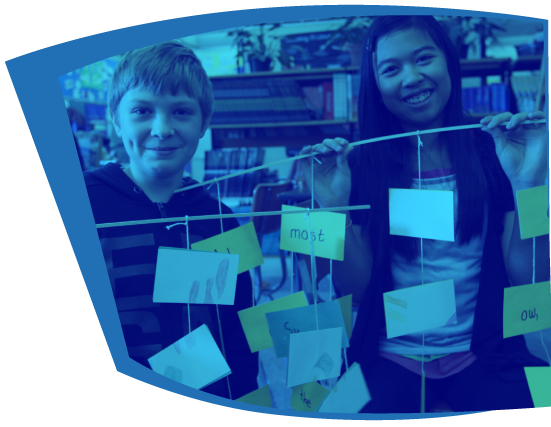Meaning behind reconciliation
Reconciliation Art Project



The Reconciliation Pole and two Welcome Figures are more than artwork, they represent medicine for Indigenous children; moving Indigenous education forward.
During the carving process, more than 1,500 students from across the District visited the artists and learned about the carving process, the significance of the symbols on the poles, and about the Truth and Reconciliation Commission : Calls to Action and the United Nations Declaration on the Rights of Indigenous Peoples.
One of outcomes of this learning is a Reconciliation Art project where students received a cedar shaving from the Reconciliation Pole and shaped it into feathers. Students then wrote a phrase on their cedar feather that symbolized the meaning of reconciliation to them.
Students wrote phrases such as “reconciliation makes me think of hope” and “we rise by lifting others.”
“The project is designed to help students, in an artistic and engaging way, explore our shared history and begin to imagine a future of togetherness between Indigenous People and all Canadians,” says Robert Clifton, Indigenous Education curriculum consultant.
The student’s artwork is currently displayed in the Student Art Gallery at the Education Centre until the end of September.
Another group of grades 6/7 students from Strathcona Elementary explored their own true meaning of the word “reconciliation” by relating it back to their own introspection and interest. Students looked at topics such as how Indigenous language contributed to World War II, famous Indigenous artists, Pow wow dancing and the meaning behind two-spirited in LGBTQ2. Students did not shy away from controversial topics such as residential schools, the 1969 white paper, Missing and Murdered Indigenous Women and Girls.

Division 3, grade 6/7 students of Strathcona Elementary
“Everything I learned during my research on Indigenous history is that indigenous people heal in many ways from the colonization they've experienced,” says Cali Peltier, grade 7 Strathcona student. “They heal by creating opportunities to connect with their culture, their people and their history."
Guests who attended the event at Strathcona were proud to witness the students’ learning.
“Thank you for sharing your stories with us today,” says Wade Grant a Musqueam community member. “You’ve done more for reconciliation than I have ever experienced in my 12 years of visiting Vancouver schools.”
Indigenous content is now embedded throughout the revised K-12 B.C. curriculum. These two projects represent a fraction of the learning that Vancouver students and teachers are involved with around reconciliation.

